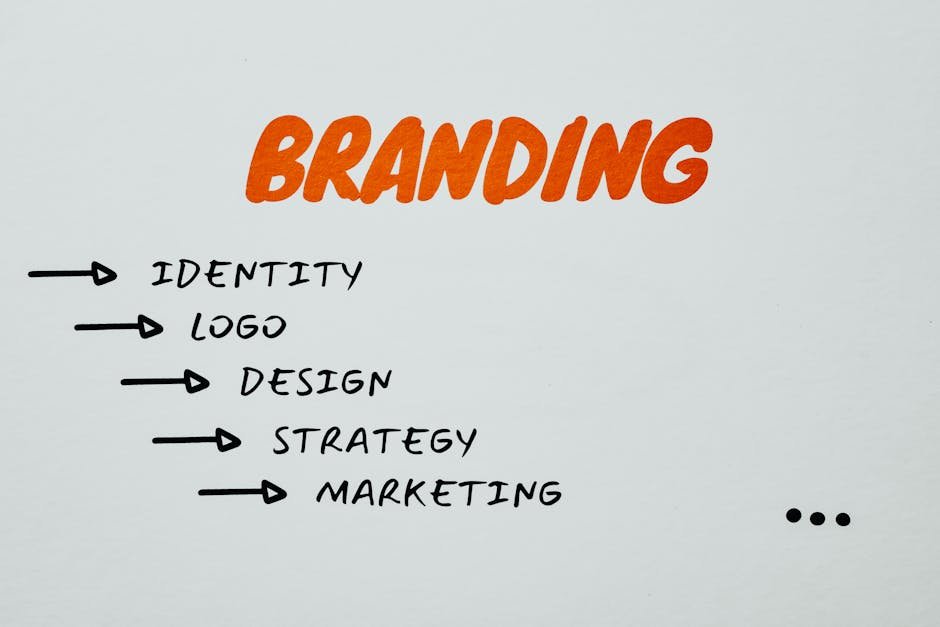The Ultimate Guide to Crafting Your Corporate Branding Strategy
Understanding Corporate Branding
Corporate branding is the way a company presents itself to the public and distinguishes it from competitors. Here’s what you need to know:
Corporate branding is all about creating a unique identity for your company.
It includes elements like your company’s name, logo, colors, and messaging.
A strong corporate branding strategy helps build trust with customers and sets you apart in the market.
Consistency is key – make sure your branding is cohesive across all channels.
Understanding your target audience is crucial in crafting an effective branding strategy.
Importance of a Strong Brand Strategy
Having a strong brand strategy is crucial for your business to stand out in the market. It helps you differentiate your company from competitors and build a unique identity that resonates with your target audience. A well-crafted brand strategy can increase brand awareness, foster customer loyalty, and drive financial success. It sets the tone for all your marketing efforts and ensures consistency in how your brand is perceived across different channels and touchpoints. In essence, a strong brand strategy forms the foundation for your business's long-term success.
Defining Your Brand Identity
When defining your brand identity, start by identifying your company's values, mission, and vision. These aspects will shape how your brand communicates and connects with your audience. Consider your target market and how you want them to perceive your brand. It's crucial to maintain consistency in your brand messaging, visuals, and tone across all platforms. Your brand identity is what sets you apart from competitors and helps consumers recognize and remember your brand.
Identifying Your Target Audience
Narrow down your audience by determining who will benefit the most from your products or services. Recognize their demographics, behaviors, and preferences to tailor your branding efforts accordingly. Understand their needs, challenges, and aspirations to establish a genuine connection with them.
Crafting Your Brand Message
When crafting your brand message, it's essential to think about what sets your company apart from others. Your message should be clear, consistent, and align with your values. Consider these tips:
Clearly define your brand's unique selling points (USPs).
Ensure your message resonates with your target audience.
Stay true to your brand's identity and voice throughout all communications.
Use your brand message to create a strong emotional connection with customers.
Regularly review and refine your brand message to keep it relevant and impactful.
Choosing Branding Elements
When choosing your branding elements, consider the following key components:
Your brand's logo, which should be simple, memorable, and reflective of your company's values.
The color palette that will represent your brand, as colors convey emotions and can impact how your audience perceives your brand.
Selecting typography that is easy to read and aligns with your brand's tone and personality.
Visual elements like images, graphics, and icons that enhance your brand identity and help in conveying your message effectively.
Implementing Branding Across Channels
When implementing your branding across different channels, ensure consistency in your messaging and visuals. Use the same logo, colors, and tone of voice across all platforms to create a cohesive brand identity. This approach will help customers recognize your brand easily and build trust over time. To achieve this, consider the following strategies:
Create brand guidelines that outline how your brand should be presented.
Utilize social media, website, email communications, newsletters, free PDF material, printed materials, and any other touchpoints consistently.
Monitor and track the performance of your branding efforts to make adjustments as needed.
By implementing your branding effectively across channels, you can strengthen your brand presence and connect with your target audience more effectively.
Measuring Branding Success
To measure branding success, it's essential to track key performance indicators (KPIs) that align with your branding goals. These may include metrics such as brand awareness, customer loyalty, and brand perception. Utilize surveys, focus groups, and social media analytics to gather data on how your audience perceives your brand. Regularly monitor and analyze these metrics to assess the effectiveness of your branding strategy and make adjustments as needed.
Updating and Maintaining Your Brand Strategy
When updating and maintaining your brand strategy, it's crucial to regularly assess if your current branding aligns with your company's goals and target audience. Here are some key points to consider:
Consistency is Key: Ensure that all branding elements, from logos to messaging, are consistent across all platforms.
Consumer Feedback: Regularly gather feedback from customers to understand how your brand is perceived and make necessary adjustments.
Stay Relevant: Keep up with industry trends and update your brand strategy to stay relevant and appealing to your audience.
Competitor Analysis: Monitor your competitors' branding strategies to ensure your brand stands out in the market.
Internal Alignment: Get buy-in from employees and ensure they understand and embody the brand values in their interactions.
By prioritizing these aspects, you can keep your brand strategy fresh, engaging, and in line with your business objectives.
Conclusion: Building a Successful Corporate Brand
To create a successful corporate brand, remember to maintain consistency in all your branding efforts. Ensuring that your brand message, visuals, and tone of voice are consistent across all platforms helps build recognition and trust with your audience. Establishing a strong brand identity can set you apart from competitors and create a lasting impact on customers. Additionally, regularly monitoring and evaluating your branding strategy allows you to adapt to market changes and customer preferences, ensuring your brand remains relevant and appealing. Consistency, adaptability, and a deep understanding of your target audience are key components of building a successful corporate brand.

